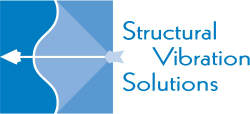The occurrence of rotating components ‘harmonics’ has been difficult to handle for years and in applications where rotating machinery is present in the structure being tested, it has been essential to turn off the rotating machinery while carrying out the modal analysis, or it has been necessary to depend on the use of operating deflection shapes (ODS) analysis.
The ARTeMIS Modal has the ability to handle ‘harmonics’ from rotating components such as motors, pumps, propellers, wind turbines, and generators.
Ways to handle harmonic peaks arising from rotating machinery
There are different ways to handle the problems arising from the harmonic components in the vibration measurements. These can be divided as follows:
- Use harmonic detection to locate the harmonic peaks and then use this knowledge when estimating modes
- Use a harmonic reduction approach to remove the harmonic peaks before a modal estimation.
- Use modal estimation techniques robust to the presence of harmonic components in the measurements
The optimal approach is to use a combination of the above tools.
Operational modal analysis of a ship in the presence of harmonic excitation
This case study demonstrates how the use of harmonic detection and peak reduction makes it easy to estimate modes from a ship, even in the presence of significant harmonic excitation.
The measurements and analysis presented here have been performed by University of Rostock, Faculty of Mechanical engineering Technical Mechanics chair.
The measurements have been made under fully operational conditions and the responses have been recorded using a 16-channel acquisition system and sampled with 128Hz. Here the data has been analysed up to 12.8Hz as there are no modes of interest above this frequency.
One of the major challenges has been a severe harmonic peak very close to the resonance of one of the fundamental modes of the structure. Additional orders of this harmonic frequency are also very significant in energy. A higher order mode at 8.2Hz is masked by the harmonics of the same frequency. The aim of this analysis is to remove the harmonic peaks that render the operational modal analysis of this data less effective, and to estimate the global modes of the ship.
Technical specifications of the ship:
The ship tested has the following technical specifications:
- Built at Flensburger Schiffbau Gesellschaft, Germany
- Length: 199.8m
- Speed: 22.5kn
- Main engine: 9L 60MC-C (MAN B&W, nine cylinder)
- Power: 20.070kW
- Speed: 123rpm
- Working process: two-stroke
- Four-bladed propeller with controllable pitch
Step 1 – Detection of Harmonic Excitation Peaks
The first step is to use the harmonic detection available in ARTeMIS Modal. This detection loops through the measurement channels applying a sliding bandpass filter to determine the level of Kurtosis at different frequencies.
In the Fast Detection approach, only a few potential frequencies are evaluated, whereas in the Extended Detection approach all frequencies available in the corresponding spectral density spectra are evaluated.
If the Kurtosis at a frequency drops much below three, then it is a sign that the data at this particular frequency isn’t normally distributed, which is the usual case of modal response from several independent input sources. In this case a green indicator is shown to signal that the data at this particular frequency might be from some rotating component rather than from a mode.
The green indicators clearly show what frequencies the harmonic peaks are located.
Step 2 – Reduction of Harmonic Excitation Peaks
Once the most significant harmonic peaks have been identified, the second step is to perform a reduction of these peaks as well as other very lightly damped modes (<0.7%).
Estimation of Modes
Estimation of the modes of the ship has been performed using the UPCX Crystal Clear SSI method with built-in uncertainty estimation of the modes.
In this case, state space models with a dimension from 1-120 has been estimated and a stabilisation diagram constructed. The global modes are then automatically extracted from the diagram, taking the estimated uncertainties into account. This allows a very accurate extraction of more than 25 modes in the selected frequency band.

